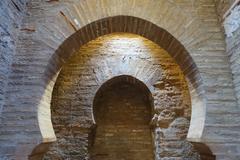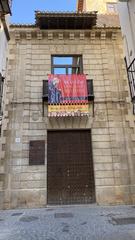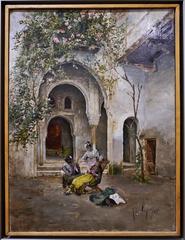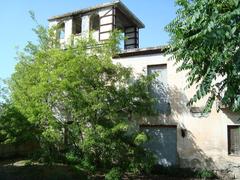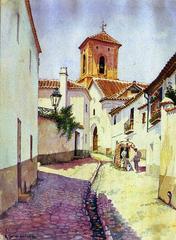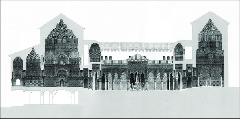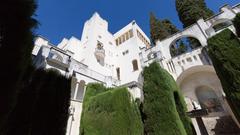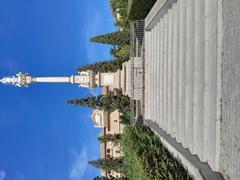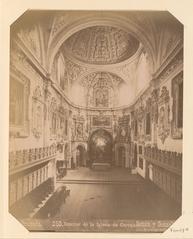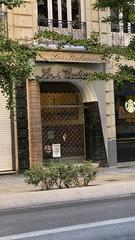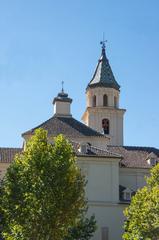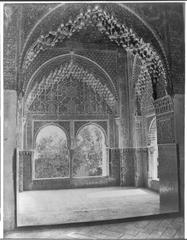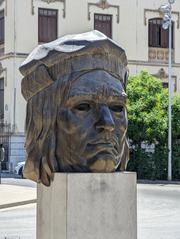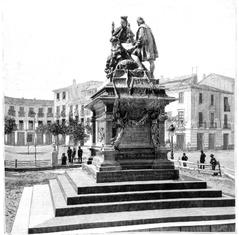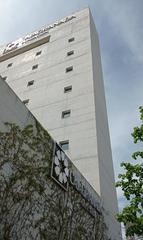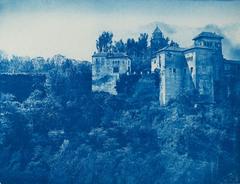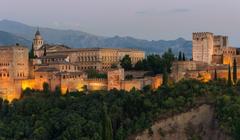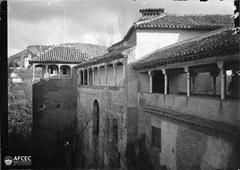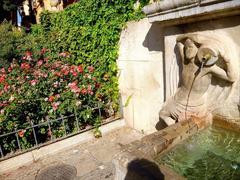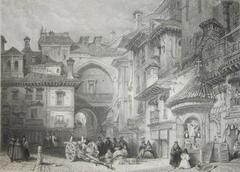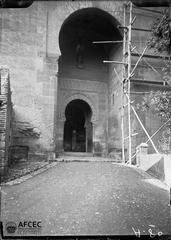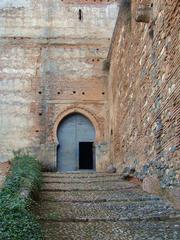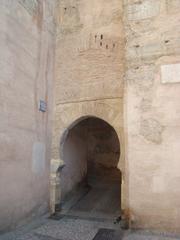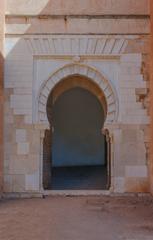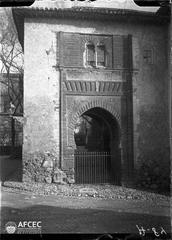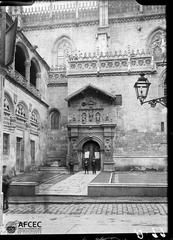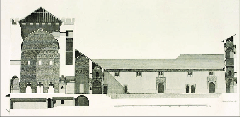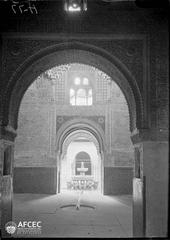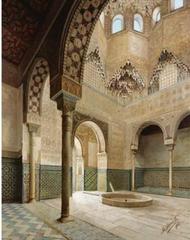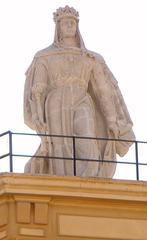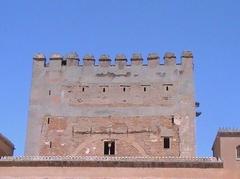Aljibe de la Plaza del Salvador Granada: Visiting Hours, Tickets, and Historical Sites Guide
Date: 03/07/2025
Introduction: The Significance of Aljibe de la Plaza del Salvador in Granada
Nestled within the heart of Granada’s legendary Albaicín district, the Aljibe de la Plaza del Salvador stands as a testament to the city’s rich Islamic heritage and the remarkable hydraulic engineering of the Nasrid period. Constructed between the 13th and 15th centuries, this public cistern is one of the few surviving examples of the sophisticated water management systems that sustained Granada’s population during its medieval heyday. Set amidst the cobbled streets and whitewashed houses of the UNESCO-listed Albaicín, the aljibe not only embodies architectural ingenuity but also represents the central role of water in Islamic culture and urban life.
Located beside the Church of El Salvador (built atop the former main mosque of the Albaicín), the cistern’s history reflects the layered religious, social, and urban evolution of the neighborhood. For visitors eager to explore Granada’s historic fabric, the Aljibe de la Plaza del Salvador offers a unique lens on the city’s past, enhanced by its proximity to iconic sites like the Mirador de San Nicolás and the traditional Hammam Al Ándalus. This detailed guide provides comprehensive information on the aljibe’s history, architecture, cultural significance, visiting hours, ticketing, accessibility, and practical travel tips—ensuring a meaningful and well-prepared visit. For deeper research, consult resources such as Miriam Tourist Guide, Mis Paseos por Granada, and Albaicín Granada.
Table of Contents
- Origins and Historical Context
- Architectural Features and Engineering
- Social and Cultural Significance
- Transition After the Christian Conquest
- Living Heritage and Conservation
- Visiting Information: Hours, Tickets, and Accessibility
- Practical Visitor Tips
- Nearby Attractions
- FAQ
- Summary and Recommendations
- Official Sources and Further Reading
1. Origins and Historical Context
Aljibes, or cisterns, are a defining feature of Granada’s Islamic heritage. Their construction—most notably during the Nasrid period—was a response to the region’s arid climate and the need for reliable urban water storage. The Albaicín, by the 11th century, had developed an intricate network of acequias (irrigation channels), albercas (pools), and aljibes, enabling it to flourish even with scarce natural water sources (Miriam Tourist Guide; Hammam Al Ándalus).
The Aljibe de la Plaza del Salvador, fed by acequias such as Aynadamar, was vital for local residents—supplying water for daily use and religious rituals, especially in the absence of modern plumbing (Mis Paseos por Granada).
2. Architectural Features and Engineering
Layout and Structure:
The aljibe is a rectangular chamber (approx. 4.03 x 2.01 m, 3 m height), holding around 19 cubic meters of water. Its design features a distinctive esquifada (pointed barrel) vault, built from brick and lime mortar—techniques typical of Nasrid hydraulic engineering (Mis Paseos por Granada).
Water Collection:
Rainwater and runoff were funneled into the cistern via gravity-fed channels, with a wellhead at the surface protected by stone or iron covers. The vault provided temperature stability, protecting water quality year-round.
Materials and Construction:
Walls and vaults used local brick and stone, sealed with lime mortar for impermeability. The cistern was embedded below plaza level, with only the wellhead visible—combining utility with discreet urban integration.
3. Social and Cultural Significance
In Islamic Granada, water was a symbol of divine blessing and prosperity. Aljibes were more than functional reservoirs—they were community hubs where neighbors gathered, fostering social cohesion. The tranquil sound and presence of water evoked the Qur’anic image of paradise, influencing city planning and daily life (Miriam Tourist Guide).
The aljibe’s location near the main mosque (now the Church of El Salvador) highlights its importance in religious and communal routines (albaicin-granada.com).
4. Transition After the Christian Conquest
Following Granada’s conquest in 1492, the system’s communal ethos changed. Water rights became subject to regulation and commercialization, leading to disputes and appeals from local residents. Despite these changes, the Nasrid-era infrastructure remained, bearing witness to its durability and adaptability (Hammam Al Ándalus).
5. Living Heritage and Conservation
Restoration:
The aljibe underwent significant restoration in 1940, which included reinforcing its vault, repairing masonry, and updating waterproofing. Ongoing maintenance by local heritage groups ensures its preservation (Mis Paseos por Granada).
Contemporary Significance:
Today, the aljibe is celebrated as a symbol of Granada’s Islamic past and the Albaicín’s living heritage. Its presence in guided tours and cultural events underscores its continued relevance (albaicin-granada.com; piccavey.com).
6. Visiting Information: Hours, Tickets, and Accessibility
- Visiting Hours: The aljibe is an outdoor site, freely accessible at all times. The adjacent Church of El Salvador has separate visiting hours (typically 10:00 AM–6:00 PM, Tuesday to Sunday; check locally for updates).
- Ticketing: No ticket is required to view the aljibe from the plaza. Guided tours may be booked through heritage organizations or local operators for a fee.
- Accessibility: The plaza is reached via steep, cobblestone streets. The site is partially accessible; visitors with mobility concerns should plan accordingly.
7. Practical Visitor Tips
- Getting There: Best accessed on foot from central Granada; C31 and C32 minibuses also serve the Albaicín.
- Footwear: Wear sturdy shoes suitable for uneven terrain.
- Amenities: Cafés, shops, and tapas bars in Plaza del Salvador offer refreshments and rest stops.
- Photography: Free, but be respectful of residents and religious services.
- Guided Tours: Enhance your understanding by joining an Albaicín walking tour, many of which include the aljibe.
8. Nearby Attractions
- Church of El Salvador: Built atop the former mosque, showcasing layered religious history.
- Mirador de San Nicolás: Offers panoramic views of the Alhambra and city.
- Aljibe del Rey: The largest cistern in the Albaicín, also worth visiting.
- Casa de Yabquas and Aljibe de Polo: Additional historic sites in the immediate vicinity.
9. Frequently Asked Questions (FAQs)
Q: What are the visiting hours?
A: The cistern is outdoors and accessible at all times.
Q: Is there an entry fee?
A: No, viewing the aljibe is free.
Q: Is the site accessible for wheelchair users?
A: Accessibility is limited due to steep, cobbled streets.
Q: Are guided tours available?
A: Yes, several operators include the aljibe in Albaicín tours.
Q: Can I enter the cistern’s interior?
A: The interior is generally closed; check for occasional guided tour access.
10. Summary and Visitor Recommendations
The Aljibe de la Plaza del Salvador is a cornerstone of Granada’s Nasrid heritage—combining architectural mastery, historic significance, and community spirit. Its continued preservation and integration into public tours and cultural events highlight the city’s commitment to safeguarding its diverse history. Visitors are encouraged to explore the aljibe alongside the Albaicín’s other treasures and to make use of guided tours for a deeper appreciation.
For further planning, consult Miriam Tourist Guide, Mis Paseos por Granada, and the Official Albaicín Tourism Site.
11. Sources and Official Links
- Discover the Aljibe de la Plaza del Salvador: Visiting Hours, Tickets & History (Miriam Tourist Guide)
- Aljibe de la Plaza del Salvador: Architectural History (Mis Paseos por Granada)
- Aljibe de la Plaza del Salvador: Cultural Significance (Albaicín Granada)
- Self-Guided Walking Tour (Visit-Andalucia)
- Albaicín Visitor Guide (HeyGranada)
- Aljibes in Granada (Piccavey)
- Route of Albaicín Aljibes (Milyunarutas)
Plan your visit to the Aljibe de la Plaza del Salvador and experience the enduring water heritage of Granada’s Albaicín—an essential chapter in Spain’s historical narrative.

